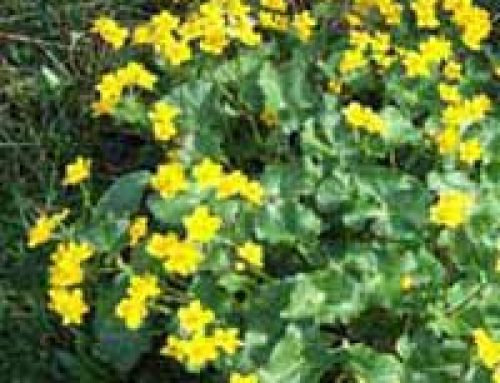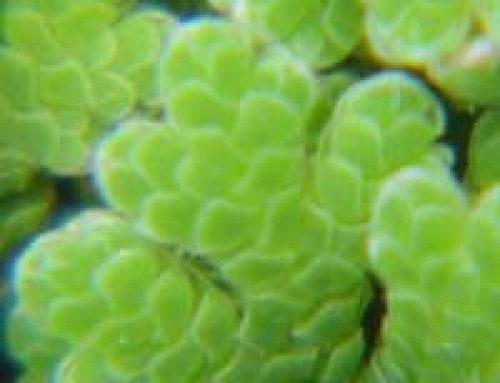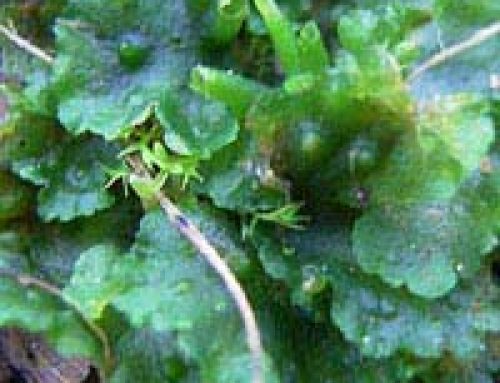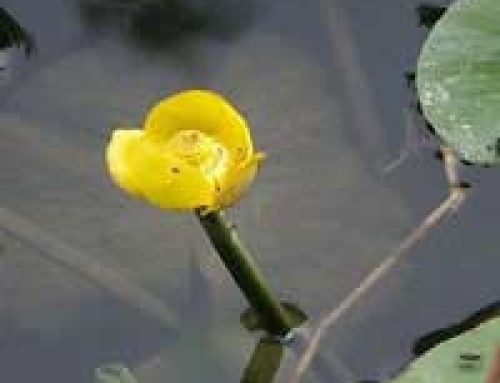 Wisely used marginal plants can play a major role in both making the most of the look of your pond and improving the overall quality of the aquatic environment.
Wisely used marginal plants can play a major role in both making the most of the look of your pond and improving the overall quality of the aquatic environment.
With a little imaginative planting around the edges, even the newest of water features soon begins to look well established, while careful selection of the plants for their height, form and colour can allow the pond to make a striking focal point in any garden. Getting the best out of this group of plants largely depends on the type of pond you have, and the overall effect you’re trying to achieve.
The Traditional Pond & Marginal Pond Plants
Marginals can be particularly useful in a traditional garden pond for beginning to introduce a little height to the pond edges, to help soften the inevitable sudden junction with the rest of the garden. Unless it is being used as a form of deliberate design statement, the starkness of this transition naturally tends to jar on the eye – which is where marginals can really come into their own. Where the pond’s space and contours permit, arranging marginal plants in a succession of ever taller forms, gradually rising from the water to meet the bank can help sweep the observer’s gaze from water to land in a way that just seems right. Although this works best in more natural-looking ponds, the idea can still be very effective even for barrels, container water features or the most geometric of formal ponds, though obviously it needs to be handled a little differently to keep the proper overall balance.
Other types of pond plants include: Oxygenating pond plants, marginal pond plants, pond edge plants, floating pond plants, floating pond water lilies and deep water pond plants.
Marginal Pond Plants for the Wildlife Pond
In the wildlife pond, marginals can perform an important role in the lives of a range of the residents and visitors, particularly the smaller and more vulnerable creatures which need damp conditions to thrive, but make easy meals for larger pond animals. All sorts of creatures can be found sheltering amongst their roots and leaves, amphibians use them as routes into, and out of, the water, and their upright stems act as vital staging posts for emerging dragonflies and their kin. Take a bit of time to plan your planting scheme, and if you can perfect a nearly seamless transition from pond to dry land, using marginals and bog plants to soften the joins, then you’ll be nine-tenths of the way to having created a really valuable wildlife habitat.
Ideal Candidates for Marginal Pond Plants
Marginal plants offer a wide range of shapes, heights, colours and forms, so whatever your particular needs, you shouldn’t have too much of a problem finding something to fit the bill. The list of candidates suitable for most kinds of ponds includes brooklime (Veronica beccabunga), bog bean (Menyanthes trifoliate), the showy marsh marigold (Caltha palustris), water mint (Mentha aquatica) and the tall and striking yellow flag- (Iris pseudocorus ).
When it comes to selecting small marginal plants for the smaller pond, a bit of care is needed, since many of the plants commonly on sale either grow too large, or too vigorously – and sometimes both! Two of the best choices around are corkscrew rush ( Juncus effusus spiralis) and spike rush (Eleocharis acicularis), both of which can be safely included in even the smallest of water features.
Multiplying Marginal Pond Plants
One of the best – and possibly least well known – things about marginals is just how easy they are to propagate, either to increase the stock in your own pond, or to swap for different plants with other water gardeners. In many cases, all that you need to do is divide them. Rhizome-forming plants such as Sweet Flag (Acorus calamus) or irises, for instance, can be prised apart by hand and then cut into individual sections for planting, while creeping rooted marginals such as Reed Mace (Typha latifolia) just need to be pulled into conveniently sized clumps.
Plant the results in a pond basket, using good quality compost, cover with gravel, and submerge in a few inches of water and in no time at all, your efforts should be rewarded with the sight of fresh, new growth.
Whatever your take on garden design, and no matter what kind of pond you have, there’s a lot to be gained by making the most of marginals.
A massive list of suitable marginal shelf pond plants for UK ponds!
ALISMA PLANTAGO-AQUATICA | Oval leaf and many small white flowers. Height 45cm (18"). Flowers June/August. | Plant with 5-15cm (2"-6") of water over soil |
|
ANEMOPSIS CALIFORNICA | Unusual pond plant with cream/white flowers with honey fragrance. Height 30cm (12"). Flowers June-August. | Plant with 1-2cm (1") of water over soil |
|
BUTOMUS UMBELLATUS | Low growing rush leaves and pink flowers in umbels on tall stems. Height 60-90cm(24"-36"). Flowers June/July. | Plant with 5-20cm(2"-8") of water over soil |
|
BUTOMUS UMBELLATUS SCHNEEWEISS | Low growing rush leaves and white flowers in umbels on tall stems. Height 60-90cm(24"-36"). Flowers June-July. | Plant with 5-20cm (2"-8") of water over soil |
|
CALTHA PALUSTRIS | Mounds of leaves with 3cm(1" ) single yellow flowers. Height 30cm(12"). Flowers early Spring. | Plant in wet mud or with up to 10cm (4'') of water |
|
CALTHA PALUSTRIS STAGNALIS | Large leaves 20cm(8") single yellow flowers. Height 60cm-90cm (24"-36’’). Flowers early Spring. | Plant with up to 15cm(6'') of water over the top of the basket |
|
CAREX ACUTIFORMIS | Decorative grass with green foliage and drooping black seed heads. Height 45-60cm(18"-24"). Seed heads April-July. | Plant in wet mud or with up to 15cm (6'') of water |
|
CYPERUS ERAGROSTIS | Grass with seeds held on a green spikelet. Height 60-90cm(24"-36"). Seeds August-October. | Plant in wet mud or with up to 5cm(2'') of water |
|
CYPERUS INVOLUCRATUS | Leaf bracts in a spoke arrangement with seed heads which turn brown. Height 60-90cm (24"-36"). Seeds August-October. | Plant with 5cm(2'') of water over the top of the basket |
|
CYPERUS LONGUS | Drooping brown seeds on each spikelet. Height 90cm(36"). Seeds August onward. | Plant with 5-20cm(2''-8'') of water over the top of the basket |
|
EQUISETUM SCIRPOIDES | Miniature Equisetum with thin green stems barred with black rings. Height 15-20cm(6"-8"). | Plant in wet mud or with 2cm(1'') of water over the top of the basket |
|
ERIOPHORUM ANGUSTIFOLIUM | Cotton grass with white cotton grass heads over thin leaf grassy foliage | Stream edge/bog garden or with 2cm(1'') of water over the top of the basket in a sunny or partially shaded pond for Shelf 0 |
|
HOUTTUYNIA CORDATA CHAMELEON | Variegated red, green and yellow foliage and small white flowers. | Stream edge/bog garden or with 5cm(2'') of water over the top of the basket in a sunny or partially shaded pond for Shelf 0. Flowers June – August. |
|
IRIS (Louisiana hybrid) BLACK GAMECOCK | Dark purple black flowers with yellow signal. | Wet mud or with up to 5cm (2") of water over the top of the basket in a sunny pond for Shelf 0. |
|
IRIS PSEUDACORUS | Broad Green leaves in Spring with yellow Iris flowers. | Stream edge/bog garden or with up to 25cm (10'') of water over the top of the basket in a sunny pond. For Shelf 0, 1 or 2 |
|
IRIS PSEUDACORUS VARIEGATA | Green and yellow variegated leaves in Spring with yellow Iris flowers. | Stream edge/bog garden or with up to 15cm (6'') of water over the top of the basket in a sunny pond. For Shelf 0, 1 or 2. |
|
IRIS VERSICOLOR | Rich purple flowers with broad green leaves. | Stream edge/bog garden or with up to 5cm (2'') of water over the top of the basket in a sunny pond. For Shelf 0 or 1. |
|
IRIS VERSICOLOR MYSTERIOUS MONIQUE | Red plum flowers with yellow markings. | Stream edge/bog garden or with up to 5cm (2'') of water over the top of the basket in a sunny pond. For Shelf 0 or 1. |
|
ISOLEPIS CERNUA | Small grass-like oxygenator with white seed heads. | Patio container pond with 5cm (2") of water over basket in a sunny or partially shaded pond. For Shelf 0 in a sunny or partially shaded pond. |
|
JUNCUS ENSIFOLIUS | Small rush with dark brown, round seed heads. Height reaches up to 20cm (8"). Suitable for planting in a sunny or partially shaded pond with 5cm (2") of water over the basket. For Shelf 0. | Sunny or partially shaded pond | Up to 5cm (2") |
LYTHRUM SALICARIA | A British Native plant commonly known as Loosestrife. Produces purple flowers in whorls on woody stems. Height can grow between 90-120cm (36"-48"). Plant in wet mud or up to 10cm (4'') of water over the basket in a sunny or partially shaded pond. Suitable for Shelf 0 or 1. | Stream edge/bog garden or sunny or partially shaded pond | Up to 10cm (4'') |
MENTHA AQUATICA | A British Native plant with lilac flower heads, also known as Water Mint. Height reaches up to 30cm (12"). Plant in wet mud in a stream edge/bog garden or up to 5cm (2'') of water over the basket in a sunny or partially shaded pond. Suitable for Shelf 0. | Stream edge/bog garden or sunny or partially shaded pond | Up to 5cm (2'') |
MENTHA CERVINA | Water Spearmint plant with globular lilac flower heads. Height reaches up to 30cm (12"). Plant in wet mud in a stream edge/bog garden or up to 5cm (2'') of water over the basket in a sunny or partially shaded pond. Suitable for Shelf 0. | Stream edge/bog garden or sunny or partially shaded pond | Up to 5cm (2'') |
MENTHA CERVINA ALBA | A variety of Water Spearmint plant with globular white flower heads. Height reaches up to 30cm (12"). Plant in wet mud in a stream edge/bog garden or up to 5cm (2'') of water over the basket in a sunny or partially shaded pond. Suitable for Shelf 0 or 1. | Stream edge/bog garden or sunny or partially shaded pond | Up to 5cm (2'') |
MYOSOTIS SCORPIOIDES ALBA | A plant with white Forget-me-not flowers on a loose scrambling plant. Height reaches up to 20cm (8"). Plant in wet mud or up to 5cm (2") of water over soil in a sunny or partially shaded pond. | Sunny or partially shaded pond | Up to 5cm (2") |
MYOSOTIS SCORPIOIDES | A British Native plant with blue Forget-me-not flowers on a loose scrambling plant. Height reaches up to 20cm (8"). Plant in wet mud or up to 5cm (2") of water over soil in a sunny or partially shaded pond. | Sunny or partially shaded pond | Up to 5cm (2") |
MYOSOTIS SCORPIOIDES | This plant is a loose scrambling plant with blue Forget-me-not flowers. It grows up to 20cm (8") tall and blooms from May to July. | Plant in wet mud or with up to 5cm(2") of water over soil in a sunny or partially shaded pond | Shelf 0 |
OENANTHE JAVANICA FLAMINGO | This plant has delicate leaves with pink and cream margins and small white flowers. It grows up to 15–30cm(6"-12") tall and blooms from July to September. | Plant in wet mud in a stream edge/bog garden or with up to 5cm(2'') of water over the top of the basket in a sunny or partially shaded pond | Shelf 0 |
PONTEDERIA CORDATA | This plant has blue flower spikes above heart-shaped leaves. It grows up to 60cm (24") tall and blooms from August to September. | Plant with between 10-15cm(4''-6'') of water over the top of the basket in a sunny or shaded pond | Shelf 1 or 2 |
PONTEDERIA CORDATA LANCIFOLIA | This plant has pale blue flower spikes above heart-shaped leaves. It grows up to 9 –100c (36"-40") tall and blooms from August to September. | Plant with between 15-25cm(6''-10'') of water over the top of the basket in a sunny or shaded pond | Shelf 2 |
POTENTILLA PALUSTRIS | This plant is a rafting plant with a divided toothed edge leaf and deep red flowers. It grows up to 15cm (6") tall and blooms from May to June. | Plant in wet mud in a stream edge/bog garden or with up to 10cm(4'') of water over the top of the basket in a sunny or partially shaded pond | Shelf 0 |
PRIMULA FLORINDAE | Giant cowslip primula with large yellow flowers that are fragrant. Height 60cm (24"). Flowers from July to September. Plant in wet mud or with 2cm (1") of water over soil in a sunny pond for Shelf 0/1. | Sunny or partially shaded pond | 2cm (1") or water |
RANUNCULUS FLAMMULA | Sprawling plant covered in small yellow buttercup flowers. Height 15cm (6"). Flowers from May to July. Plant in wet mud or with up to 5cm (2") of water over soil. | Any location with wet soil or shallow water | Up to 5cm (2") deep |
RORIPPA NASTURTIUM-AQUATICUM | Horizontally rafting stems with underwater leaf that oxygenates the water and surface growing round, with green leaf and small white flowers. Height 10cm (4"). Flowers May to August. | Sunny, partially shaded or shaded pond | Up to 2.5cm (1") deep |
SAGITTARIA SAGITTIFOLIA | White flowers with purple centers above arrow-shaped leaf foliage. Height 5-8cm (2-3"). Flowers from June to August. Plant with between 10–15cm (4-6") of water over soil in a sunny pond. | Sunny pond | 10–15cm (4-6") deep |
TYPHA MINIMA | Miniature Bullrush with rounded seed heads and thin reedmace leaves. Height 60cm (24"). Plant with between 5–10cm (2"-4") of water over soil in a sunny or partially shaded pond. | Sunny or partially shaded pond with shallow water | 5–10cm (2"-4") deep |
VERONICA BECCABUNGA (Brooklime | Royal blue flowers on a rafting plant. Height 15cm (6"). Flowers from May to July. Plant in wet mud or with 2cm (1") of water over soil in a sunny pond for Shelf 0. | Sunny or partially shaded pond with wet soil or shallow water | 2cm (1") of water |
What are marginal pond plants?
Marginal plants are aquatic plants that grow around the edges, or margins, of a pond, where the water is shallow. These plants typically have their roots and crowns submerged in the water, but their lower foliage may be above the water line. Marginal plants are placed on planting shelves within the pond and come in a variety of shapes, sizes, textures, and flower colors.
What are the benefits of marginal planting?
Marginal plants grow in shallow water or damp soil at the edges of ponds, and they are as important as oxygenating plants for healthy pond life. Native flowering marginals attract flying insects, while their foliage provides shelter for aquatic wildlife and habitat for laying eggs.
What are 3 plants in a pond ecosystem?
There are many plants in a pond ecosystem, but here are three examples:
- Water Poppies (Hydrocleys nymphoides)
- Dwarf Cattails (Typha minima)
- Corkscrew Rush (Juncus effusus ‘Spiralis’)
What are the characteristics of the margin of a pond?
The margin of a pond provides a sheltered habitat for insects and small animals such as frogs. There is plenty of light and oxygen, which is ideal for plants such as marsh marigold (Caltha palustris) to thrive.
What is an emergent pond plant?
An emergent pond plant is a type of marginal plant that is usually rooted in shallow water but emerges and grows vertically into the air like land-based plants. A good example of an emergent pond plant is the marsh marigold, which can be planted in a semi-submerged pot.
Do marginal plants require soil?
Marginal plants grow in shallow water or damp soil at the edges of ponds, but they need soil to grow and provide habitat for aquatic wildlife.
Can marginal plants be submerged?
Marginal plants should not be completely submerged. Most marginal plants require a water depth of up to 15 cm, but it is essential to follow the planting instructions for each plant.
Is water mint a marginal plant?
Yes, Water Mint (Mentha aquatica) is a type of marginal plant that grows well at the edge of a pond or in boggy soil in full sun or partial shade.
Where do marginal plants go in a pond?
Marginal plants are usually planted on the inside edge of a pond or in a bog garden. They should be replanted into aquatic baskets and placed in the pond.
Do marginal plants contribute to pond oxygenation?
Marginal plants are not typically known for their oxygenating properties but they play an important role in providing habitat for aquatic wildlife and attracting insects to the pond.
How deep should marginal pond plants be planted?
Marginal plants should be planted in Zone 2 of the pond, where the planting depth is typically 0-15 cm. This is a shallow area that provides depth to the border and shape of the pond.
How many plants should be in a small pond?
It is recommended to plant two or three native marginal plants around the edge of a small pond, providing perches and cover for wildlife. Care should be taken to choose plants that are not too large for the available space.
How long should a pond be left before adding plants?
Before adding plants to a newly built or established pond, it is recommended to place the plants in a bucket of water for 7-10 days and change the water every day. This helps to reduce transplant shock and ensures that the plants will thrive in their new environment.
Do pond plants need soil or gravel?
Pond plants require aquatic soil to grow successfully, as it provides the necessary nutrients and support for the roots. Gravel can be used as a top layer to keep the soil in place, but it should not be used as a substitute for soil.
Should pond plants be fully submerged?
Submerged and oxygenating aquatic plants produce oxygen underwater to help keep the pond in balance, and they should be planted completely submerged. However, marginal plants should not be fully submerged and should only be grown in shallow water or damp soil.








